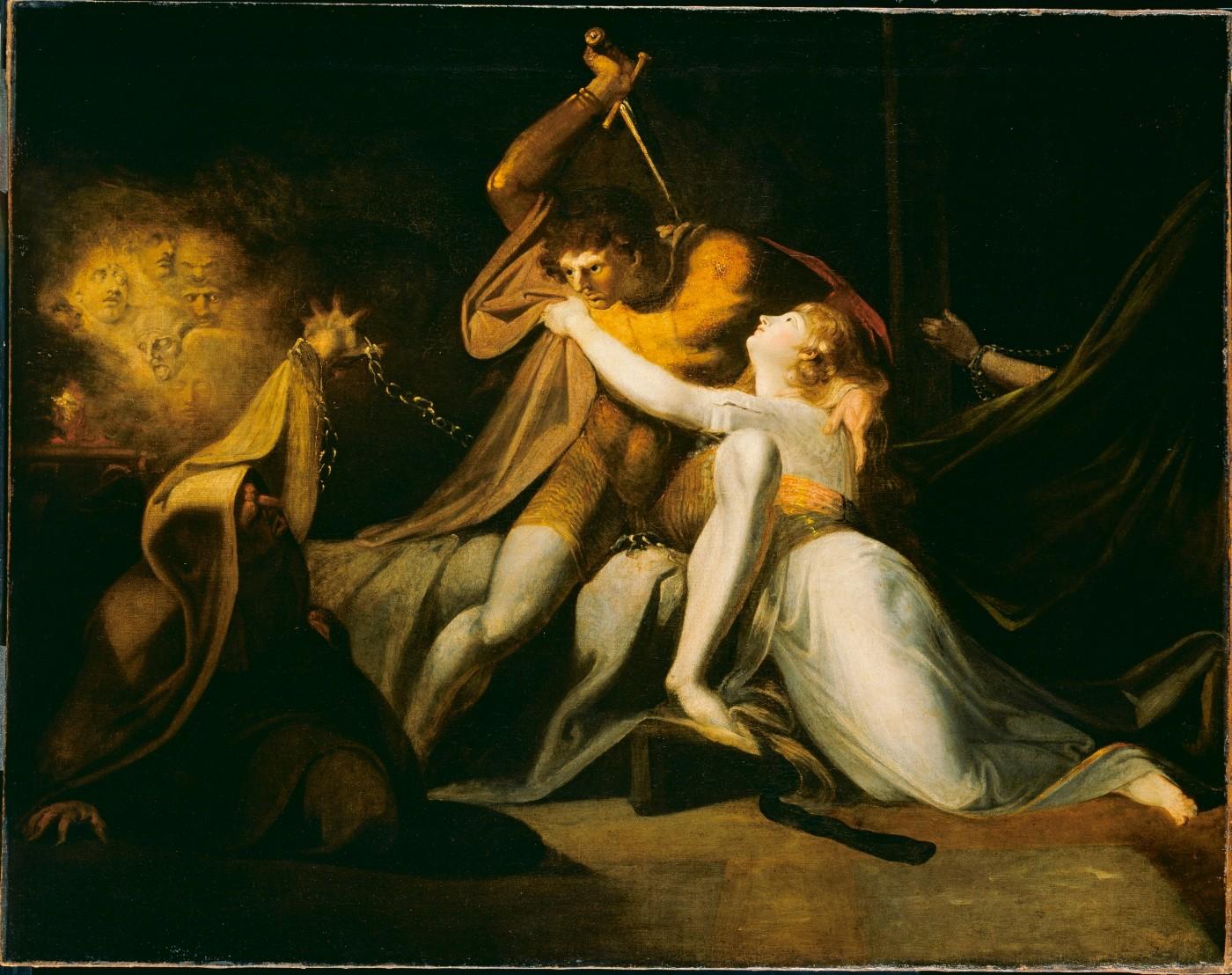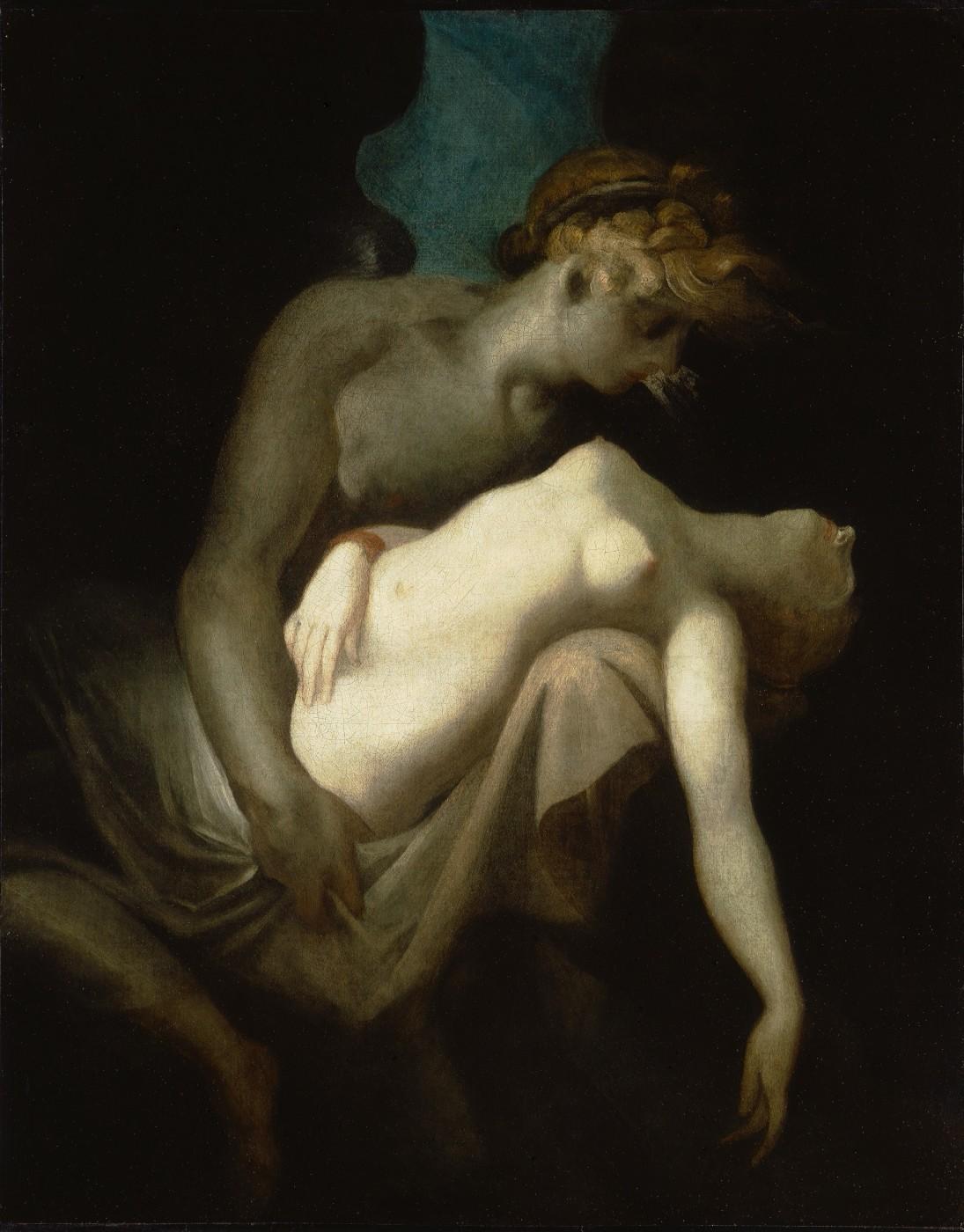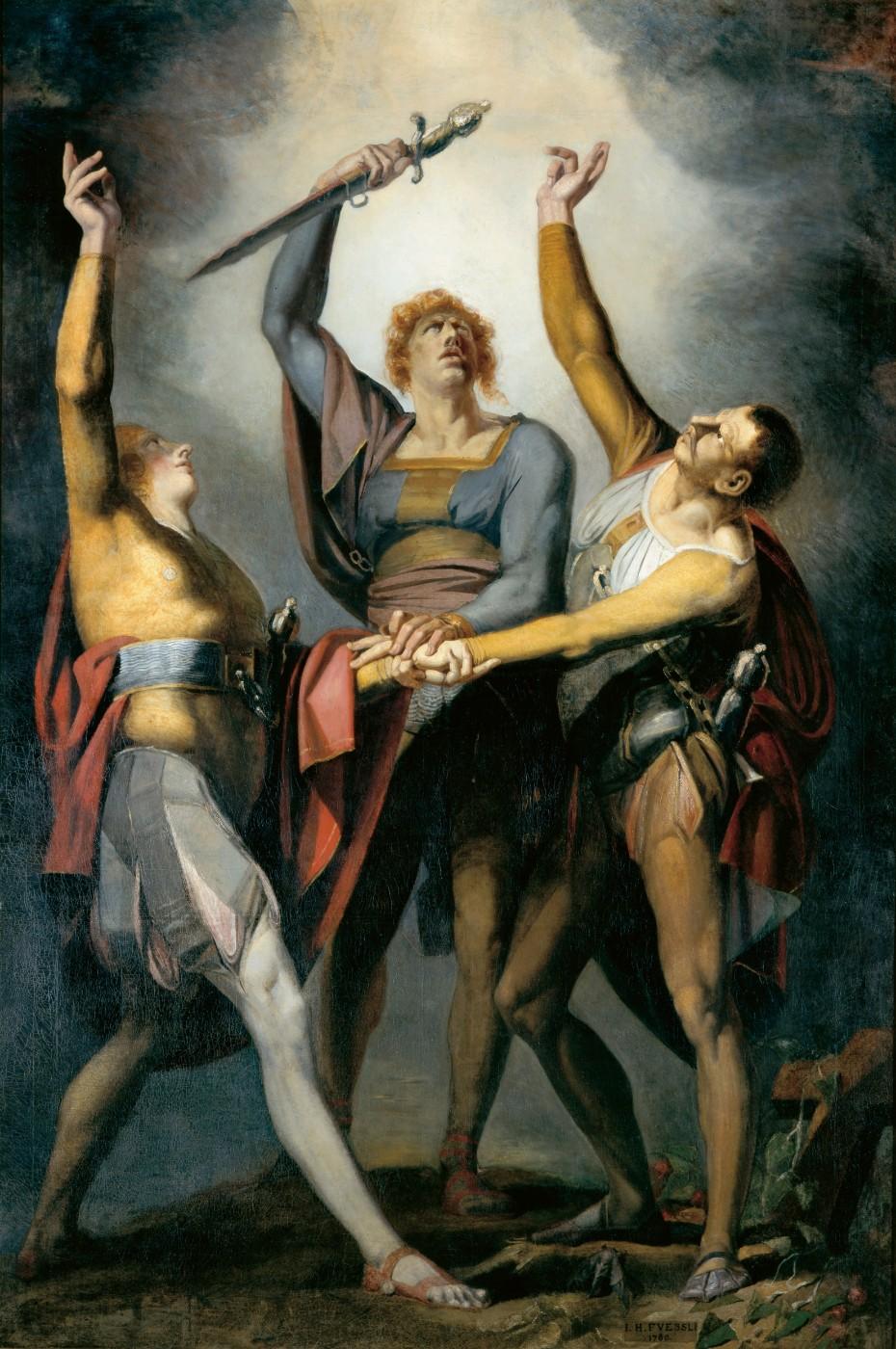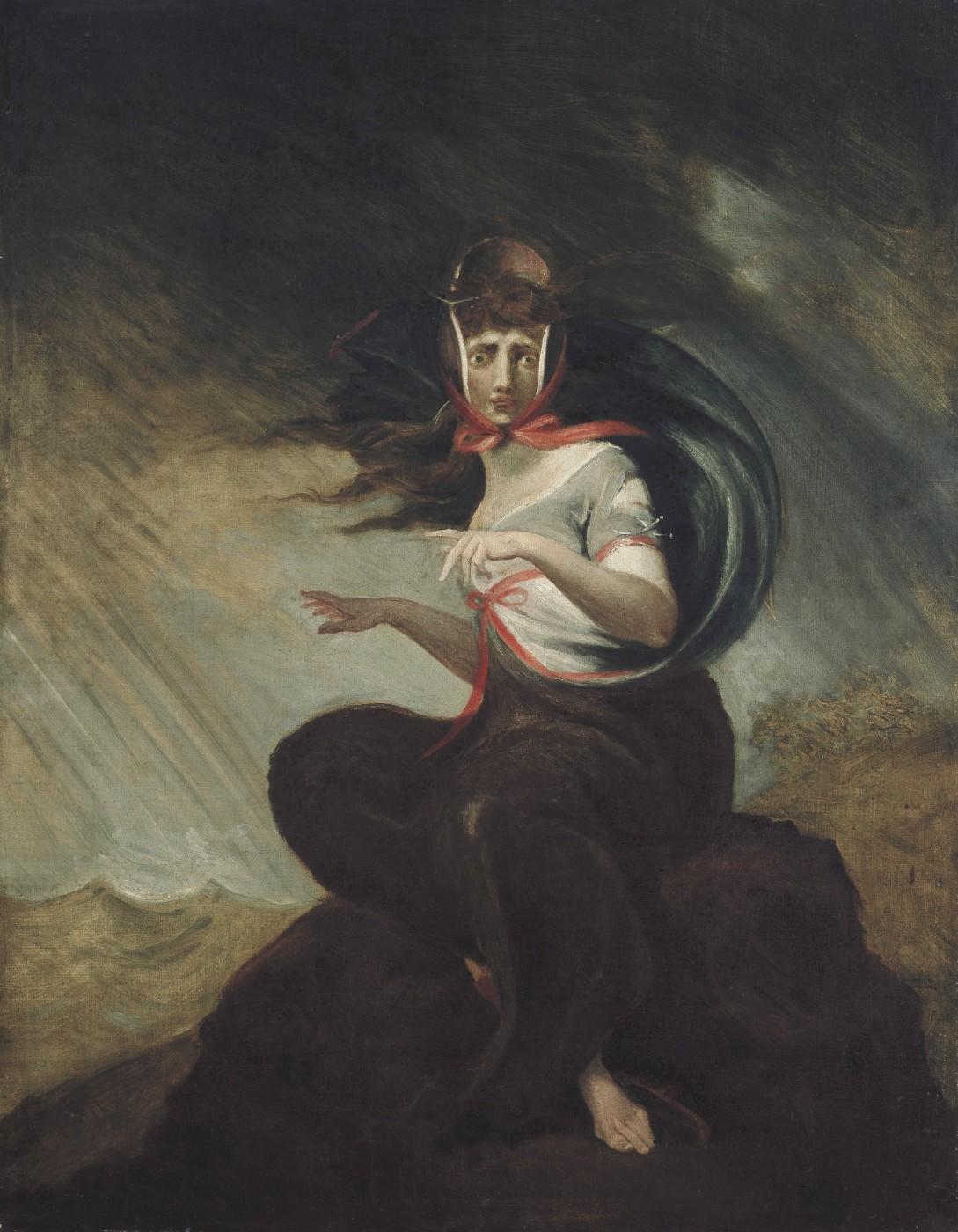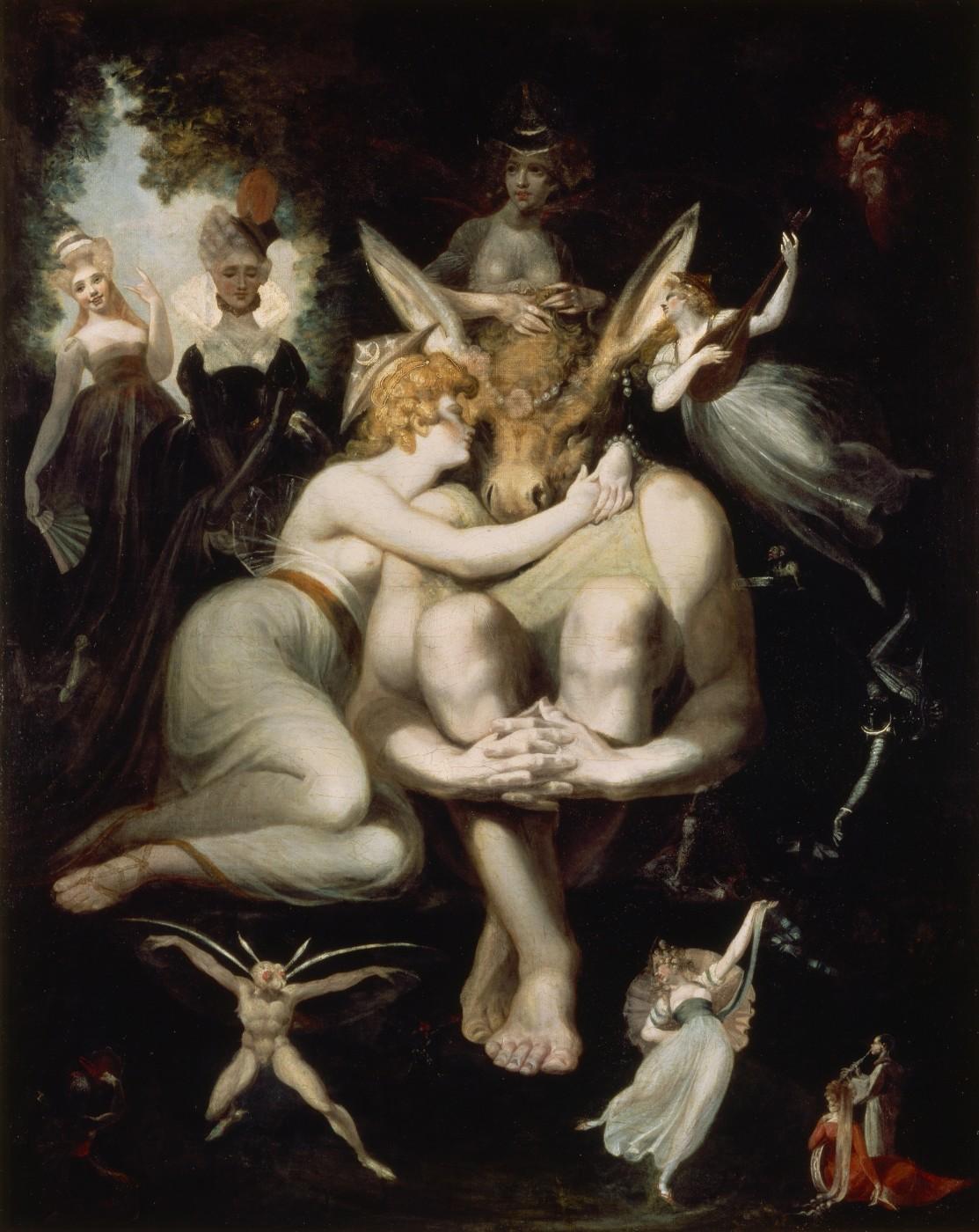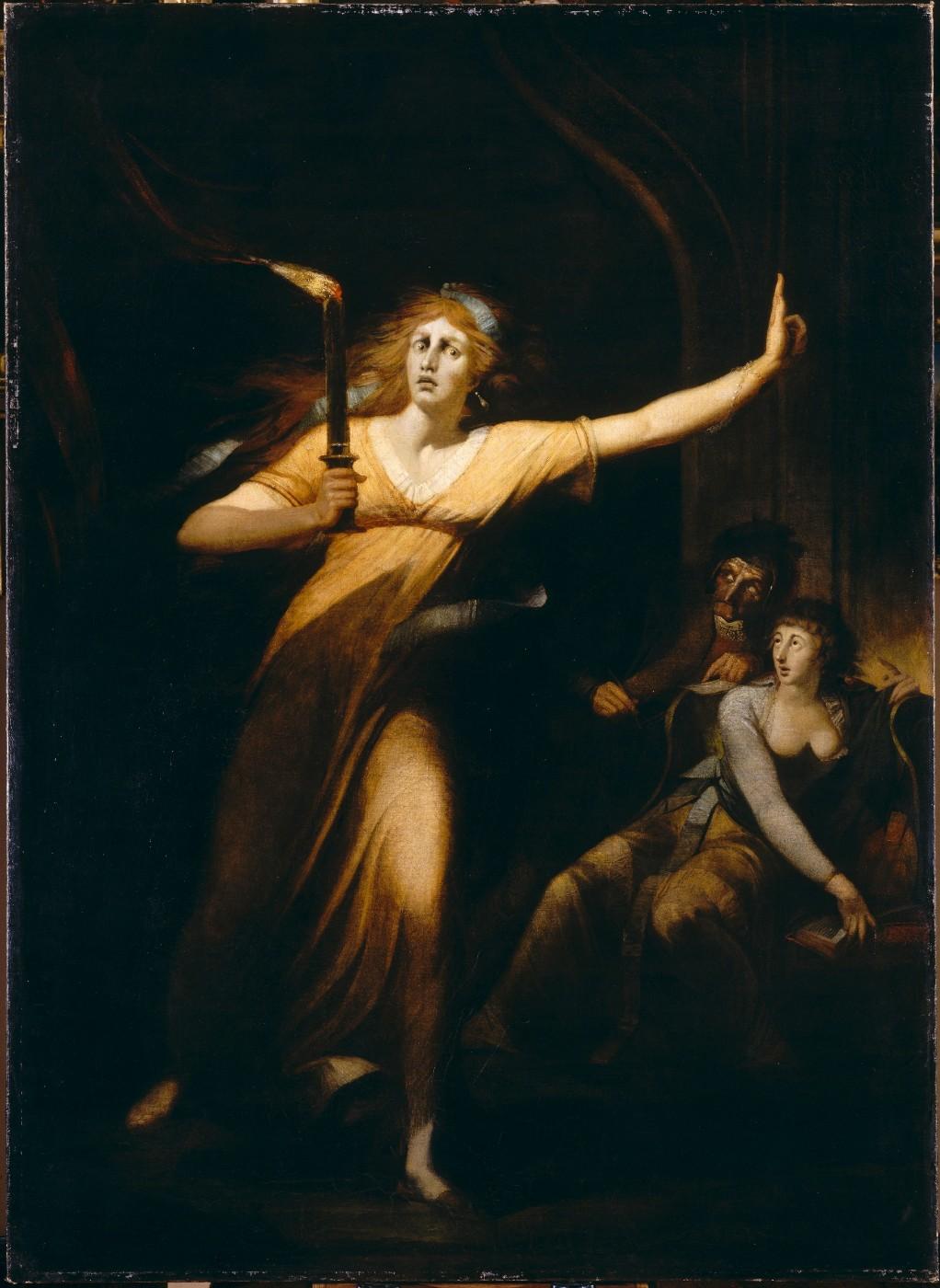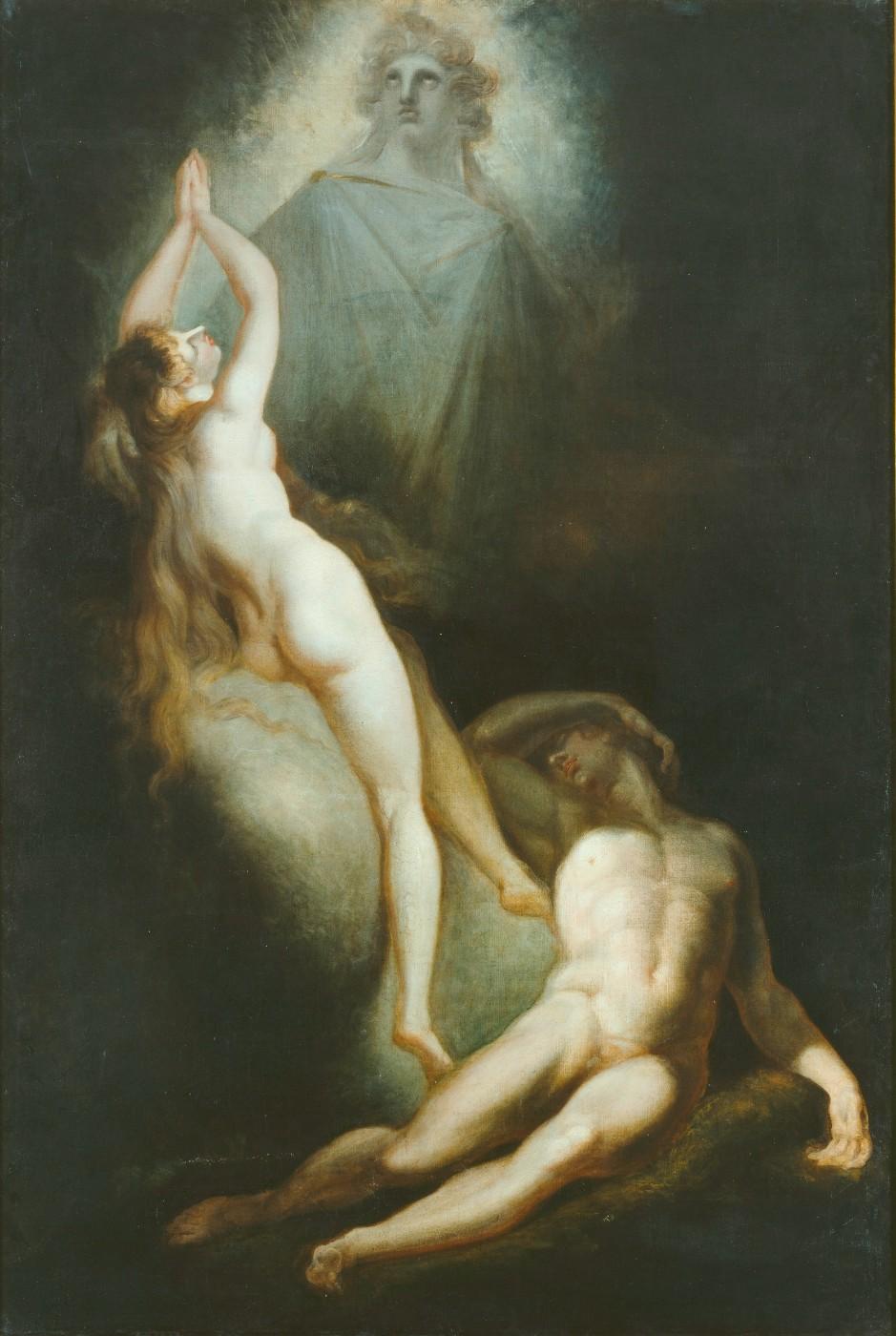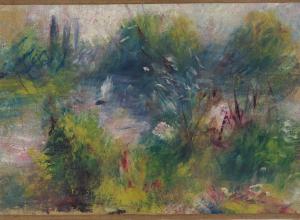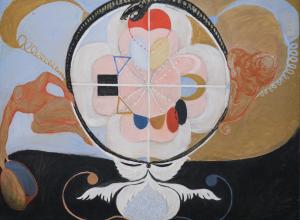The “Shakespeare of canvas”
Having spent several years in Rome, Fuseli returned to London in 1779 and soon caused a sensation with illustrations of the dramas of Shakespeare. The exhibition Fuseli. Drama and Theatre showcases large-format paintings based on A Midsummer Night’s Dream, Macbeth, and Hamlet that the self-taught artist created for two literature galleries dedicated to Shakespeare; these and other works earned him the nickname “Shakespeare of canvas.” From 1790 until 1800, Fuseli himself pursued the project of a Milton Gallery, several key works from which are also on display.
Fuseli’s public image as an eccentric “Wild Swiss,” as he was known in London, is largely due to the scandalous success of The Nightmare; we present the version now in a private collection in Basel. Wider audiences primarily know the artist as a pioneer of Dark Romanticism and “Gothic horror.” The exhibition at the Kunstmuseum Basel limns a more comprehensive portrait of the man of letters with a brilliant gift of visual invention, surrounding the viewer with his painterly translations of epic plots and surveying his literary universe as well as his dramatic imagination.
Visitors are introduced to the sources from which Fuseli drew inspiration in sections dedicated to ancient and medieval legends, his study of recent and contemporary works such as Christoph Martin Wieland’s Oberon, Shakespeare’s tragedies and comedies, and Milton’s epic poem Paradise Lost. A separate section is reserved for his portraits of writers and his inventions—paintings that, rather than adapting an existing literary model, depict “sentiments personified,” which the artist sometimes embedded in narrative contexts of his own devising.
International and multimedia
Like Fuseli’s art, Drama and Theatre does not aim for subtlety, and so the focus is on painting as the medium best suited to the artist’s quest for stirring effects. Almost seventy paintings exemplify the spectacular as well as intellectually ambitious art he created during his London decades. The seven works in the Öffentliche Kunstsammlung Basel, the municipal art collection of Basel, are complemented by generous loans from the Kunsthaus Zürich; the Folger Shakespeare Library, Washington, D.C.; the Yale Center for British Art, New Haven; the Louvre; the Tate, London; the Metropolitan Museum of Art in New York; and other Swiss and international museums and private collections.
To bring the marriage of literature, theatre, and visual art in Fuseli’s work to life in the museum, Thom Luz, resident director at the Theater Basel, has created video projections that reflect on the evocative and sometimes mysterious quality of Fuseli’s pictures in the perspective of contemporary theatre. Antenna International has produced an audio guide that gives visitors a unique opportunity to let Fuseli himself lead them through the presentation.
Publication
The catalogue prepared in conjunction with the exhibition and published by Prestel pursues an interdisciplinary approach, with contributions by scholars of literary and theatre history. Alexander Honold traces the formative influence of the poetological ideas of Johann Jakob Bodmer and Johann Jakob Breitinger, Fuseli’s teachers in Zurich, on his understanding of art. Beate Hochholdinger-Reiterer reconstructs the beginnings of the artist’s interest in Shakespeare’s works and pinpoints the developments in the London theatre scene from the 1760s onward that allowed the dramatic arts to become a source of inspiration for Fuseli’s art. Additional essays by Eva Reifert, Bodo Brinkmann, Claudia Blank, Gabriel Dette, Thom Luz, and Caroline Rae.
Fuseli: Drama and Theatre is on view through February 10, 2019, at the Kunstmuseum Basel.




